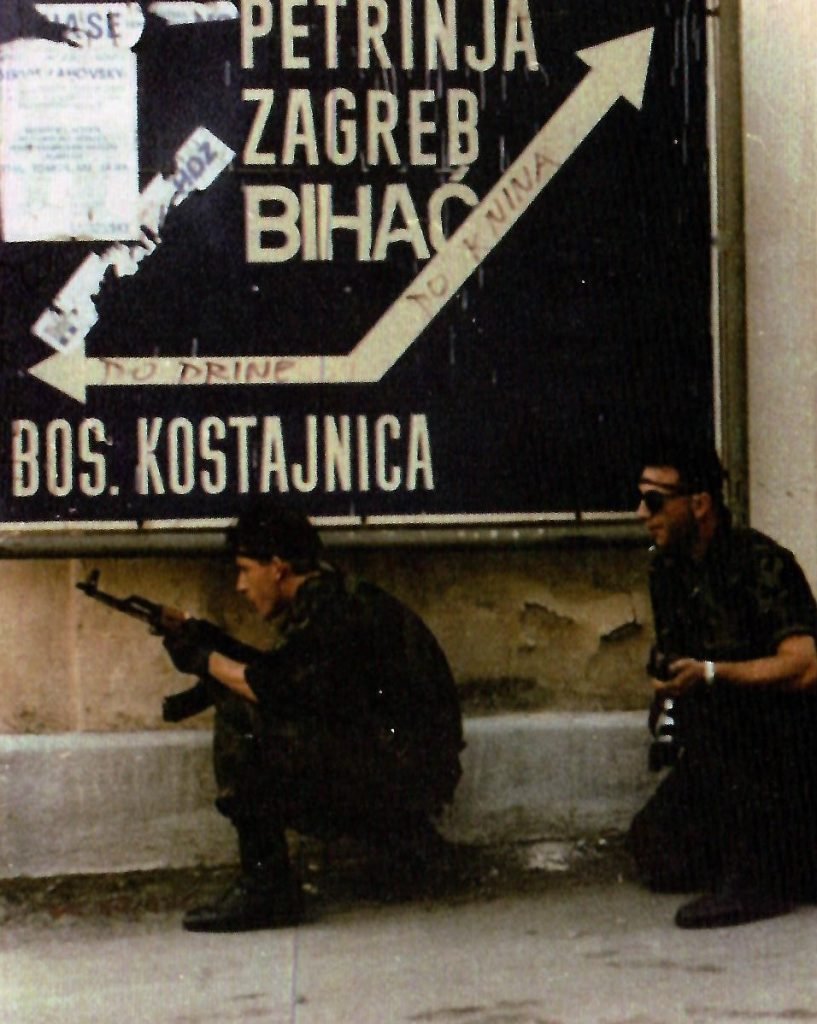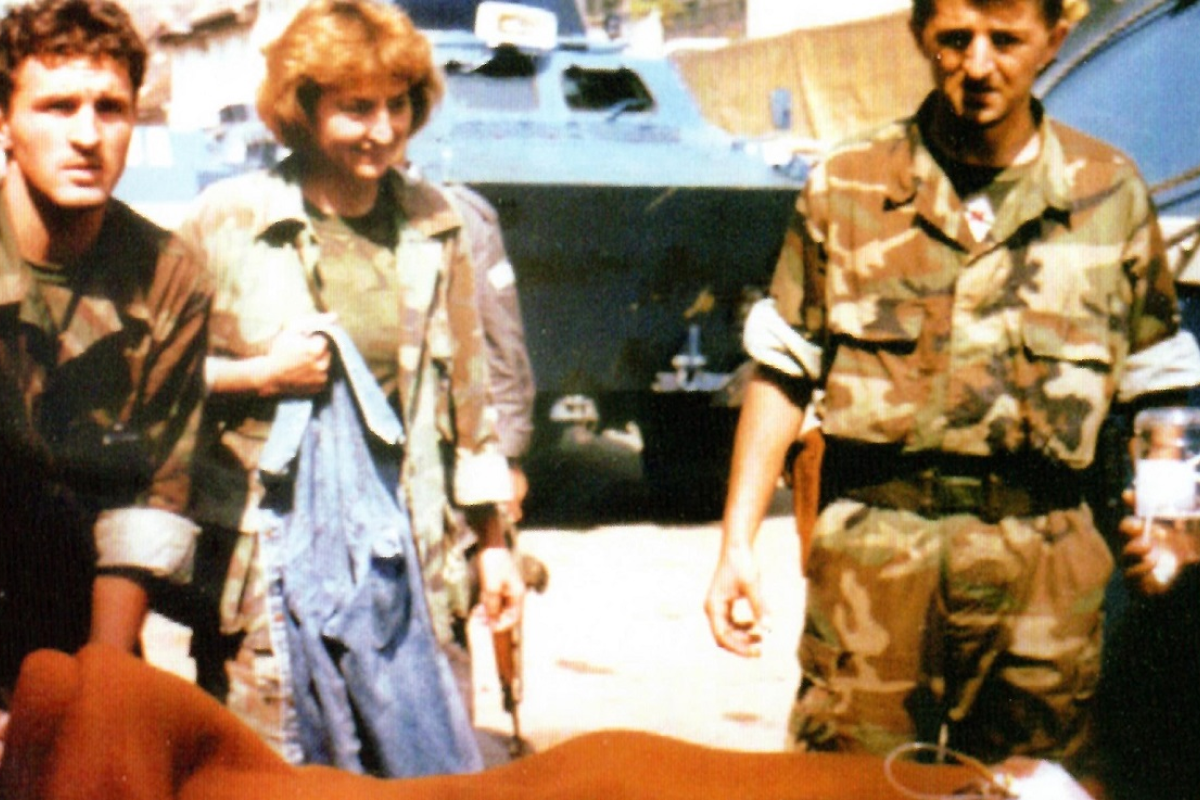Hrvatska Kostajnica, a small town on the left bank of the Una River was targeted by the Yugoslav People’s Army (YPA) and rebel Serb units in late July of 1991. Shortly after the offensive of the Serb forces in the Pounje region, known as Operation “STING” was launched, the population and a small number of defenders left the city. On the night of 1 August, Croatian forces re-entered Hrvatska Kostajnica and organized the defense of the city.
The defense of 450 men under arms consisted of guardsmen of the 1st A “Tigers” Brigade of the Croatian National Guard (CNG), active and reserve police officers of the Zagreb Police Administration and local active and reserve police officers from the Kostajnica police station.

The most difficult days for the city began in mid-August when the YPA Banja Luka corps set out to occupy western Slavonia. Tanks appeared in Bosanska Kostajnica from which intensive artillery was launched across the Una River and the destruction of Hrvatska Kostajnica and its surrounding villages had begun. Following the visit of Croatian President Dr. Franjo Tuđman to the city on 25 August, the final decision to occupy Hrvatska Kostajnica was made by local rebel Serb authorities led by Branko Dmitrović.
After the road to Hrvatska Dubica was cut off by the fall of Šuplji Kamen to the enemy on 9 September, Kostajnica was completely surrounded. Troops from the 120th Brigade of the Croatian Army and the Lučko Anti-Terrorist Unit launched an attack from Hrvatska Dubica but failed to break the blockade. After that, the situation became much more dramatic.

Dr. Igor Nikolić, head of the medical team in Hrvatska Kostajnica, contacted the Office of the President of the Republic of Croatia on the night of 10 September to warn officials of the following:
More than half of Kostajnica is occupied by Chetniks, the situation is more than alarming. The unit of the National Guard Corps, which in news reports General Bobetko claimed broke through to Kostajnica, is not true as it did not arrive at all. We have 7 dead, many wounded, little medical supplies and we don’t know how we will last until morning.
The moment that marked the total collapse of the defense of Hrvatska Kostajnica was the fall of Djed, a hill that overlooks the center of the city, in the late morning hours of 12 September. Rebel Serbs captured about 60 police officers and guardsmen who were then tortured. Croatian defenders remaining in the city heard the screams of the prisoners on Djed Hill, broadcast on the radio by their Serb torturers who forced them to surrender or face execution. This was a method used to break combat morale of the Croatian forces.
Dr. Nikolic went to Bosanska Kostajnica to negotiate the surrender of wounded members of the CNG and the police while National Guard Commander Zvonimir Kalan and Police Commander Nedjeljko Podunajec began negotiations with the YPA and local rebel forces for the surrender of the city. An agreement was reached for Croat defenders to cross the Una bridge into Bosnia-Hercegovina where they would then lay down their weapons and many eventually did so. Some of Kostajnica’s defenders ended up in the notorious Manjača concentration camp or taken to nearby Kukuruzari and later Glina, all places where they were severely mistreated and tortured. Those Croatians forces that did not surrender broke through enemy lines in a final effort to reach Hrvatska Dubica and many were killed as a result.
Cover photo – Ante Jurilj, Đurđica Medvedovski and Mirko Ćuzić take care of a wounded guard in Hrvatska Kostajnica
Sources
Literature
Monograph 1. gardijska brigada Hrvatske vojske Tigrovi, Zagreb: Znanje, 2015
Internet
Jakša Raguž: “Proboj iz Hrvatske Kostajnice”, Vojna povijest, access achieved September 2, 2020, vojnapovijest.vecernji.hr/vojna-povijest/proboj-iz-hrvatske-kostajnice-920835
TV
Kako je obranjena Hrvatska (episode 1). Croatian Radio-television. editor Ljiljana Bunjevac Filipović, 2016
Graduated with a Master’s Degree in History from the University of Zagreb. He has worked at the Croatian History Museum and as a researcher for the popular TV Calendar program for Croatian Radio and Television. He has authored several books and documentaries about Croatia’s Homeland War and is the creator/producer of the immensely popular “It Happened on this Day – Homeland War” Facebook page as well as the online portal Domovinskirat.hr. Borna also is the host and editor of the daily segment “Patriotic Minutes” on Croatian Catholic Radio. He created CroHis to promote the values of the Homeland War and ensure that the sacrifices of those who defended Croatia’s independence would not be forgotten.

